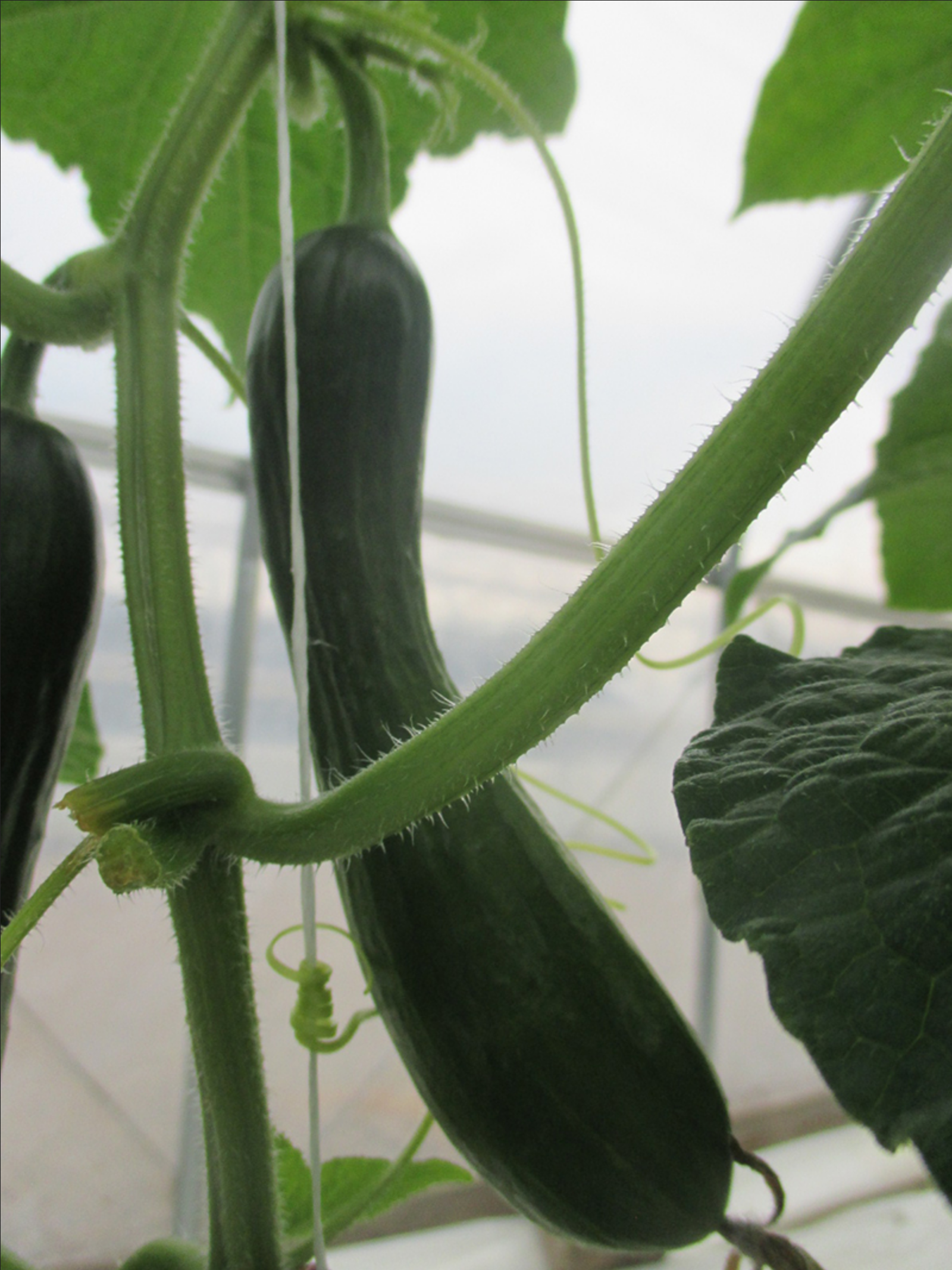picture of the week
October 4, 2021
Curved Cucumbers
Wenjing Guan, Assistant Professor, Department of Horticulture and Landscape Architecture, Purdue University
Greenhouse and high tunnel grown cucumber is a high value crop. Any kind of deformed fruit can reduce the value. Disease or insect damages weaken plants that can cause deformed fruit, but what is often overlooked are the other factors not related to pest problems. This article discusses the potential reasons that may cause cucumber fruit become deformed in protected production systems.
- Pollination. The same as many other fruit vegetables, insufficient pollination can cause deformed cucumbers. However, in the case of greenhouse grown cucumbers, majority of the varieties are parthenocarpic, which do not need pollination. Interestingly, if pollination does occur, it can also lead to deformed fruit.
- Temperature. Cucumbers are best grown when temperature is above 65 °F. Lower temperature may affect flower bud differentiation and lead to development of curved cucumbers (Figure 1). We observed this symptom happened more often in early seasons in a high tunnel production system.
- Water. Cucumbers require a large amount of water. If water supply is insufficient or ununiform, fruit expansion rate is inconsistent that can result in poor-shaped fruit (Figure 2 and 3). We observed the symptom happened more often during hot summer. When temperature is high, fruit develop fast and they are more susceptible to ununiform water supply.
- Mechanical injury. Growth of expanded cucumbers can be inhibited by clips, strings, stems, and tendrils. All of them may result in deformed fruit (Figure 4). Deformed cucumbers reduce the crop value. Severely deformed fruit should be removed as soon as possible so plant energy can be allocated to a newly developed cucumber fruit.
Click image to enlarge





